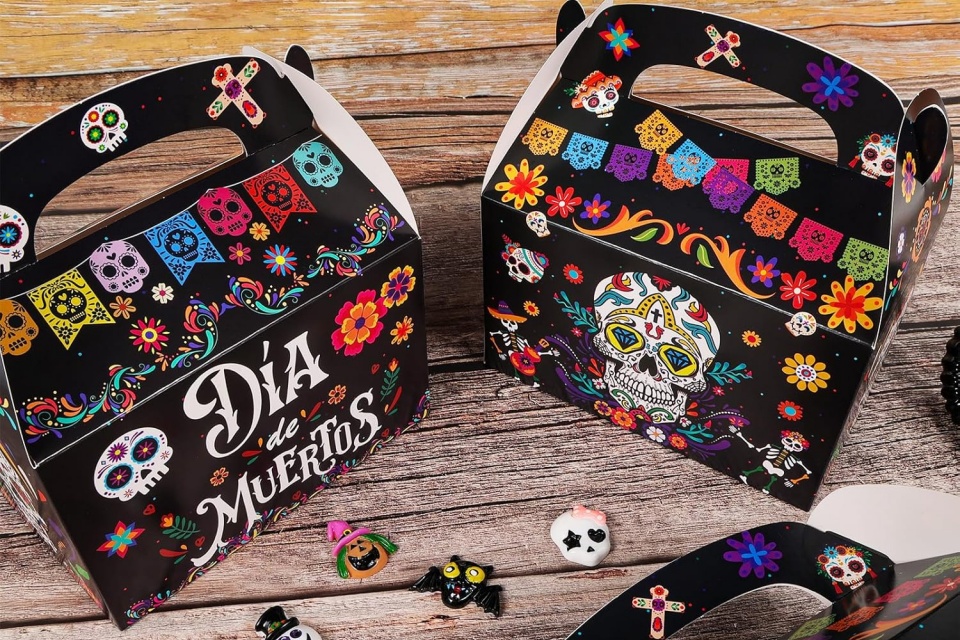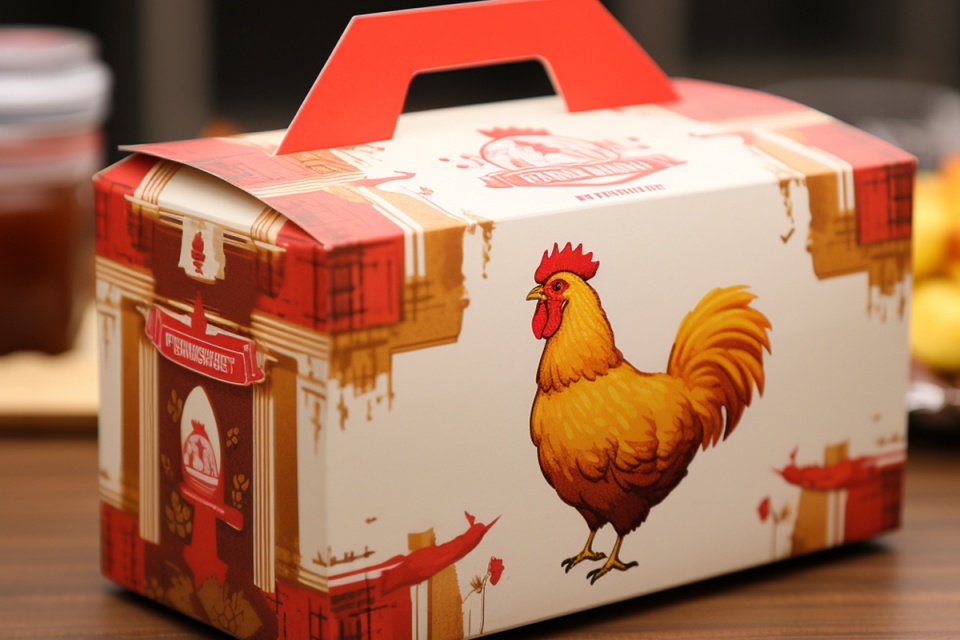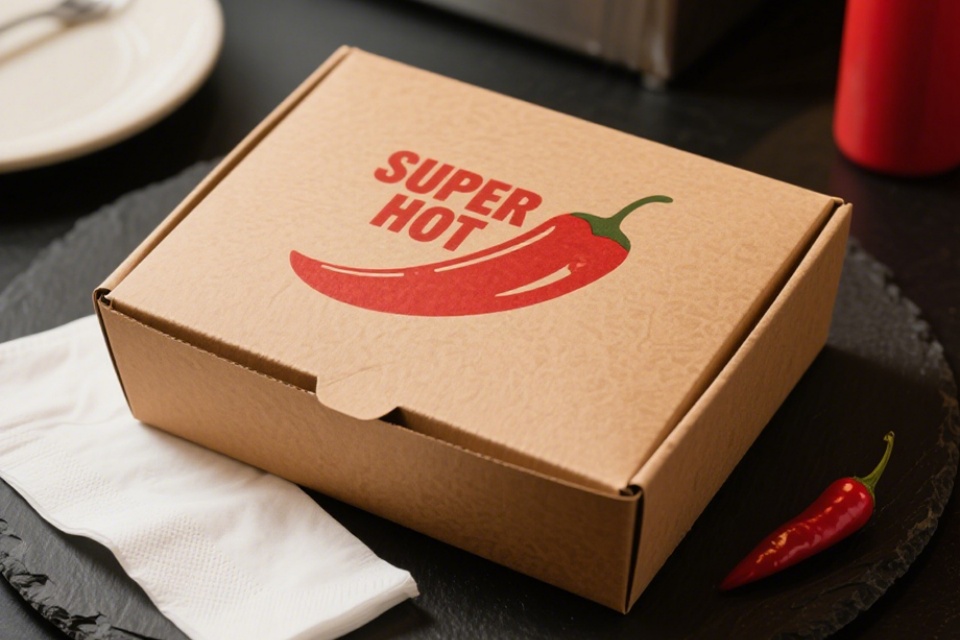Industry News
Creative Food Packaging Ideas
Creative Food Packaging Ideas
Summary
Creative food packaging encompasses innovative design strategies that enhance product appeal, attract consumer attention, and convey brand identity in a competitive marketplace. This sector has gained prominence as companies recognize the crucial role packaging plays not only in product differentiation but also in the overall consumer experience. Notably, trends such as sustainable, minimalistic, interactive, and personalized packaging reflect evolving consumer preferences and growing environmental concerns, emphasizing the need for brands to adapt their packaging strategies accordingly.
The increasing focus on sustainability is a key driver in the realm of food packaging, as brands seek to minimize their environmental impact while appealing to eco-conscious consumers. Innovations in materials, such as biodegradable plastics and recycled paper, underscore a shift towards greener solutions in food packaging, prompting discussions around the balance between sustainability and functionality in design. Moreover, the rise of interactive and personalized packaging showcases the growing demand for engaging consumer experiences, with elements like QR codes and tailored designs fostering deeper connections between brands and their customers.
Despite its advantages, creative food packaging presents challenges, including cost implications and the need to navigate regulatory requirements. Businesses must balance the desire for unique, eye-catching designs with the practicalities of production and consumer expectations for functionality, such as ease of use and food preservation. Additionally, as brands strive to innovate, they must remain transparent about their sustainability efforts to avoid consumer skepticism, highlighting the complexity of modern packaging decisions.
Prominent examples of successful packaging strategies include industry leaders like Apple, Coca-Cola, and Tiffany & Co., each of which utilizes design to reinforce brand identity and foster consumer loyalty. As food packaging continues to evolve, the interplay of aesthetics, functionality, and sustainability will remain central to capturing consumer interest and driving market success.
Types of Creative Food Packaging
Creative food packaging plays a pivotal role in attracting consumers and enhancing their overall experience with a product. This section outlines various types of innovative packaging approaches currently trending in the food industry.
Sustainable Packaging
Sustainable packaging has become increasingly important as both companies and consumers seek to minimize environmental impact. Eco-friendly materials such as biodegradable plastics, recycled paperboard, and plant-based fibers are widely used in modern packaging designs. These materials not only reduce landfill waste but also appeal to environmentally conscious consumers who prioritize sustainability in their purchasing decisions. Innovations like seaweed-based containers and compostable cartons are emerging as viable alternatives to traditional packaging materials, exemplifying the shift toward greener solutions in the food sector.
Minimalistic Design
Minimalistic packaging design emphasizes simplicity and functionality, often featuring clean lines, muted color palettes, and a focus on essential information. This approach is favored by consumers who prefer practical packaging that is easy to use and dispose of, as well as visually appealing. The minimalist trend is characterized by designs that avoid clutter, allowing the product to speak for itself.
Interactive Packaging
Interactive packaging leverages technology to enhance consumer engagement. This can include the use of QR codes or augmented reality features that provide additional product information or immersive experiences. For instance, packaging may connect consumers to recipes, nutritional facts, or even games, creating a unique interaction that goes beyond traditional product information. This type of packaging aims to build a deeper connection with consumers by appealing to their desire for interactivity and personalization.
Personalized Packaging
Personalized packaging is customized to cater specifically to consumer preferences, offering a unique touch that sets brands apart. This may include special editions, tailored designs based on consumer demographics, or even dynamic printing that reflects a customer's past purchases. Such personalized elements help foster brand loyalty and encourage repeat purchases by making consumers feel valued and understood.
Thematic and Artistic Packaging
Thematic packaging involves designing food containers that resonate with specific themes or cultural aesthetics, enhancing the consumer's emotional connection to the product. For example, brands may utilize earthy colors and natural textures to convey a commitment to nature and sustainability. Artistic packaging, on the other hand, incorporates unique visual elements and textures to create an eye-catching presentation that stands out on shelves. This can include the use of hand-drawn illustrations or imperfect details that evoke a sense of authenticity and craftsmanship.
Case Studies
Successful Examples of Packaging Design
Apple
Apple Inc. is renowned for its meticulous packaging design, which plays a crucial role in creating positive brand associations. The minimalist and premium design of its product packaging not only enhances the unboxing experience but also communicates the brand's innovation and attention to detail. This approach has effectively influenced purchasing decisions through classical conditioning, where consumers subconsciously connect Apple's sleek packaging with high-quality products.
Coca-Cola
Coca-Cola has utilized its iconic red and white packaging to foster strong emotional connections with consumers. The distinct visual identity is reinforced through consistent branding across various product lines, creating a recognizable image that resonates with global audiences. This strategy showcases how effective packaging can drive brand loyalty and influence consumer behavior, ultimately contributing to sustained sales growth.
Tiffany & Co.
Tiffany & Co. exemplifies the importance of packaging in creating a luxurious brand image. The signature blue box is synonymous with elegance and exclusivity, turning packaging into a vital marketing tool that enhances the overall customer experience. This strategic use of packaging design has solidified Tiffany's position in the luxury market, emphasizing how thoughtful design can enhance consumer perception and drive sales.
Method
Method, a household cleaning brand, employs vibrant colors and unique bottle shapes to communicate its core values of fun, innovation, and eco-friendliness. This strategic visual marketing effectively conveys the brand message, demonstrating how packaging can significantly bolster a brand's market position and influence consumer choice.
Mini Melts
Mini Melts, a popular frozen novelty brand in the U.S., recently underwent a rebranding that included updated packaging. The new design aims to capture consumer attention while aligning with modern aesthetic preferences. This case highlights the necessity of adapting packaging to reflect changing market dynamics and consumer tastes, ensuring continued relevance in a competitive landscape.
Mars
Mars Inc. has embraced technology in its packaging development process by adopting simulation software for redesigning over 12,000 packaging types. This innovative approach aims to align with existing and future recycling infrastructures, showcasing the importance of sustainability in packaging design. By prioritizing eco-friendly solutions, Mars not only enhances its brand image but also responds to the growing consumer demand for sustainable products.
Insights from Industry Trends
The success of these case studies underscores the vital role that packaging design plays in influencing consumer behavior and enhancing brand identity. As trends shift towards sustainability and innovative design, brands that effectively leverage these elements in their packaging will likely see a positive impact on their market performance.
Design Considerations
When creating eye-catching packaging for food products like ice cream and snacks, several key design considerations play a critical role in capturing consumer interest and driving sales.
Psychological Impact of Design Elements
The design of food packaging encompasses various elements such as typography, color, imagery, and shape, all of which have significant psychological impacts on consumers. For instance, research indicates that attractive packaging can trigger brain activity associated with pleasure, encouraging impulse purchases even from consumers who did not initially plan to buy the product. Thus, effective packaging design must not only attract attention but also resonate with the emotional and psychological inclinations of the target audience.
Emphasizing Human Connection
A notable trend in packaging design is the emphasis on the human element. As businesses seek to differentiate themselves from the rising prevalence of AI-driven designs, they are focusing on creating packaging that feels authentic and personal. This involves using design techniques that mimic handmade qualities, such as textures that evoke traditional lino and woodcut prints, which help to foster a sense of warmth and relatability.
Nostalgia and Storytelling
Utilizing nostalgia is another powerful strategy in food packaging design. By incorporating vintage-inspired fonts, colors, and illustrations, brands can evoke feelings of nostalgia that resonate with consumers, creating an emotional connection to the product. Furthermore, brands are increasingly using packaging to tell their stories, highlighting their beliefs, history, and authenticity through engaging narratives and well-selected visuals.
Color Psychology
Color choices are vital in packaging, as they not only attract attention but also convey brand identity and influence consumer emotions. Different colors can evoke various feelings and associations; for instance, vibrant colors may suggest energy and excitement, while softer tones might evoke feelings of calm and reliability. Therefore, aligning color schemes with the product's intended message and target audience is crucial.
Visual Aesthetics and Brand Identity
Aesthetic appeal is paramount in packaging design, as it often determines first impressions and influences purchasing decisions. Elements such as label design, graphics, and layout should be harmonized to create a visually arresting package that captures consumer interest. Additionally, the choice of fonts can convey different brand attributes, ranging from elegance and tradition to modernity and strength.
Eco-Friendly Materials
In today's environmentally conscious market, the use of sustainable materials can enhance a brand's image and appeal to a growing demographic prioritizing eco-friendliness. Packaging made from recycled or biodegradable materials not only helps the environment but also communicates a brand's commitment to sustainability.
Artistic Expressions
Lastly, brands are increasingly viewing packaging as a canvas for artistic expressions. Collaborating with artists or incorporating unique artistic designs can transform packaging into collectible items, further enhancing consumer engagement and loyalty. This approach adds an additional layer of narrative, allowing consumers to connect with the product on a deeper level.
Trends in Food Packaging
Food packaging design is constantly evolving to meet consumer preferences and market demands. Several key trends have emerged, each emphasizing unique aspects of aesthetics, functionality, and sustainability.
Minimalist Design
One of the most prominent trends in food packaging is the minimalist approach, characterized by clean lines, straightforward typography, and limited use of color. This design philosophy communicates elegance and sophistication while focusing attention on the product itself. Minimalist packaging reduces visual clutter and often signals a product's premium quality, aligning well with consumer values of simplicity and authenticity. Additionally, this approach can lead to reduced waste, as it typically uses less material overall, appealing to environmentally conscious consumers.
Smart and Interactive Packaging
The integration of technology into food packaging has given rise to smart and interactive designs. Features like QR codes and augmented reality (AR) enhance consumer engagement by providing additional product information, recipes, or promotions through digital platforms. This type of intelligent packaging not only connects consumers to brands but also facilitates a deeper interaction that goes beyond the purchase. Furthermore, technology-driven packaging solutions, such as those utilizing NFC (Near Field Communication), offer real-time data about product freshness and sourcing details, transforming the consumer experience.
Personalized Packaging
Personalization in packaging design is another growing trend, where brands customize elements to cater directly to individual consumers. This can include adding personal touches like a consumer's name or unique imagery, creating a more intimate connection with the product. Personalized packaging allows brands to stand out in a crowded marketplace and fosters brand loyalty by resonating more deeply with consumers.
Nostalgic Packaging
Nostalgic packaging has gained popularity as brands aim to evoke emotional connections with consumers. By incorporating retro typography, vintage illustrations, and bright colors, companies tap into memories of childhood, offering a timeless appeal. This strategy not only captures attention but also creates a sense of familiarity and comfort for consumers, enhancing brand recall.
Bold and Vibrant Colors
The use of bold and vibrant colors is a striking trend in modern food packaging. Designers leverage color psychology to evoke emotions and communicate product benefits. For instance, red often conveys excitement, while green signifies health and eco-friendliness. Such color choices not only attract consumers' attention but also help convey the brand's message and values effectively.
Unique Shapes and Functional Design
Innovative packaging shapes and structures are also gaining traction. Moving away from standard rectangular cartons, brands experiment with unconventional designs that enhance visibility and appeal on store shelves. Additionally, functional design plays a crucial role in customer satisfaction by ensuring that packaging is easy to handle, store, and transport, thereby enhancing the overall consumer experience.
Seasonal and Limited-Edition Designs
Seasonal and limited-edition packaging designs create excitement and urgency among consumers. These designs often feature festive colors and themes that resonate with specific holidays or events, making products more appealing during peak shopping seasons. Such strategies not only boost sales but also encourage customers to seek out exclusive offerings.
Challenges in Creative Food Packaging
Creative food packaging is essential for attracting consumer attention and differentiating products in a competitive market. However, various challenges can impede the effective implementation of innovative packaging designs.
Cost and Supply Chain Limitations
One significant hurdle is the cost associated with developing and producing creative packaging. While businesses strive to adopt unique and eye-catching designs, these often involve higher initial expenses compared to traditional packaging options. Smaller companies, in particular, face pressure on their profit margins, making it challenging to allocate funds for innovative packaging solutions. Additionally, supply chain limitations can restrict access to materials necessary for creating sustainable and artistic designs, further complicating the process of scaling creative packaging initiatives.
Balancing Sustainability and Innovation
Another challenge is balancing consumer demand for sustainable packaging with the creative aspects of design. Although a significant percentage of consumers express concern for sustainability, many prioritize cost over environmental claims, particularly in times of economic strain. This dichotomy complicates decisions for businesses that aim to create innovative packaging that is also environmentally friendly. Moreover, the lack of transparency regarding the sustainability of various packaging types can lead to consumer confusion and skepticism about the brand's commitment to eco-friendly practices.
Consumer Preferences and Expectations
Understanding and aligning with consumer preferences is crucial yet complex. While unique and creative packaging can captivate shoppers, it is essential that these designs do not sacrifice functionality for aesthetics. Research indicates that practical features—such as ease of opening, resealability, and food preservation—are paramount for consumers when evaluating packaging. Thus, businesses must ensure that their creative packaging not only attracts attention but also meets consumers' practical needs.
Navigating Regulatory Requirements
Lastly, navigating the regulatory landscape surrounding food packaging presents additional challenges. Compliance with safety and environmental regulations can complicate the creative process, as brands must ensure that their packaging meets established guidelines while still achieving their marketing objectives. This often requires thorough planning and collaboration with regulatory bodies, which can delay the launch of innovative packaging designs.
Influence of Social Media
Social media platforms play a crucial role in shaping consumer behavior and preferences in the food industry, particularly regarding packaging and sustainable consumption. The visual nature of platforms like Instagram and TikTok provides an ideal environment for ice cream brands to build engaged communities and foster brand loyalty among customers. These platforms allow brands to showcase the photogenic qualities of their products, using effective strategies such as posting appealing content, conducting interactive polls, and providing behind-the-scenes glimpses into production processes. User-generated content is encouraged, creating a feedback loop that enhances consumer engagement and drives repeat purchases.
Moreover, consumers are increasingly influenced by sustainability in their purchasing decisions, and social media amplifies this trend. Research indicates that nearly 39% of consumers are more likely to share purchases on social media if the products feature sustainable packaging. This growing awareness about environmental issues compels brands to adapt their packaging strategies, emphasizing eco-friendly materials that resonate with a more environmentally-conscious consumer base.
As a result, visually attractive and sustainable packaging can significantly impact consumer choices, as consumers are drawn to brands that align with their values. Additionally, the emotional connection fostered through social media can drive loyalty. Creative and engaging packaging, often shared by consumers online, can enhance brand visibility and create a sense of community around a product. For instance, limited edition packaging designs and interactive elements can motivate consumers to share their experiences, thereby increasing the product's reach and appeal. Overall, the interplay between social media and packaging design is pivotal in attracting modern consumers and driving sustainable consumption within the food industry.
Categories
Latest News
Contact Us
Contact: Aaron Lee
Phone: +8613570866244
Tel: +8675529490260
Add: Li Songlang 2nd Industrial Zone,No.18,FengTang Rd,Guangming New District


